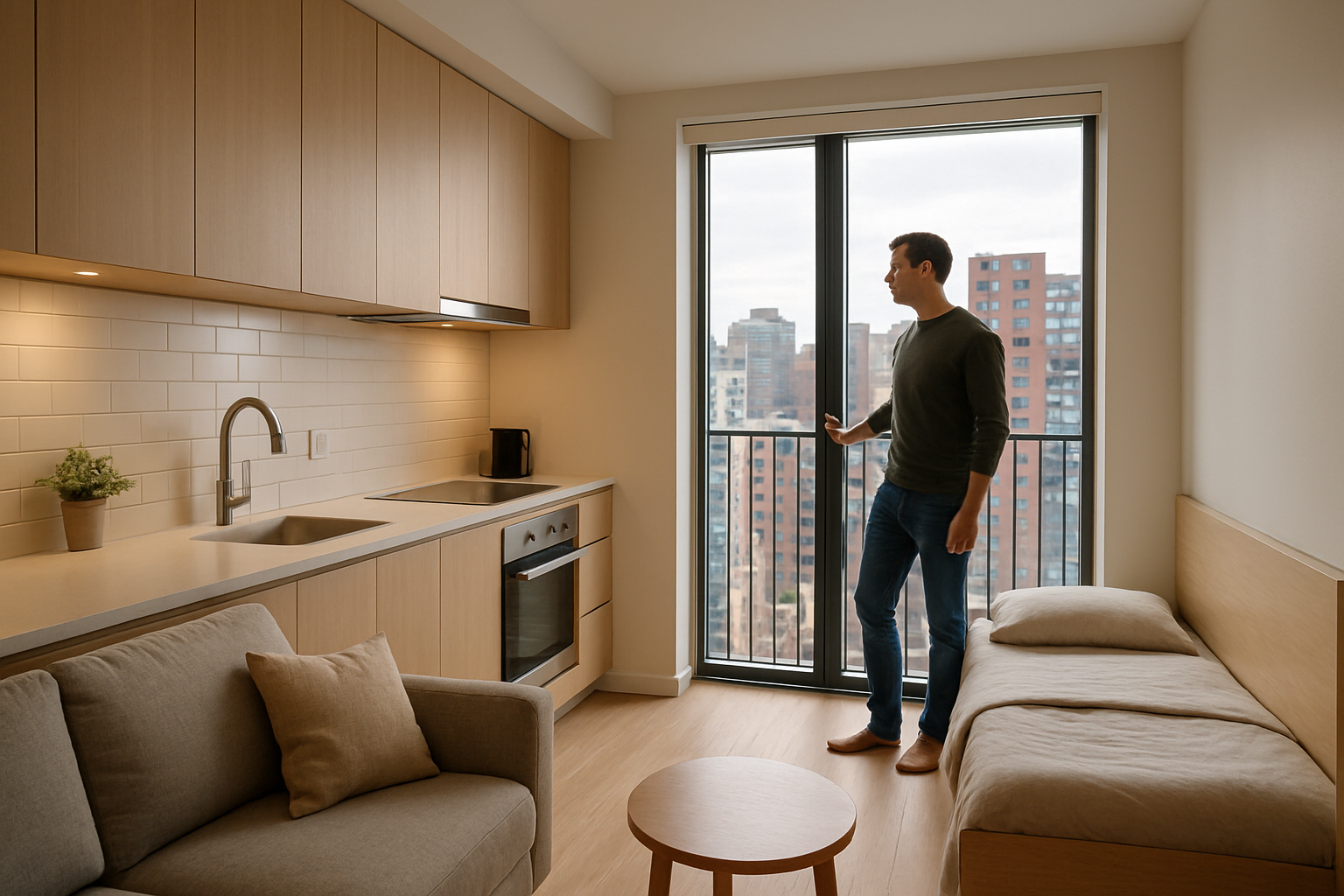Micro-Apartments: The New Frontier in Urban Living
Introduction: In the heart of bustling metropolises, a quiet revolution is reshaping the way urbanites live. Micro-apartments, typically spanning less than 400 square feet, are emerging as a compelling solution to urban housing challenges. This innovative approach to real estate is not just a trend but a response to changing demographics, soaring property prices, and evolving lifestyle preferences in major cities worldwide.

The modern micro-apartment movement gained traction in the early 2010s, particularly in cities like New York, San Francisco, and Tokyo. These urban centers, facing severe housing shortages and skyrocketing rents, became fertile ground for innovative housing solutions. Developers and city planners began reimagining small spaces, turning them from last resorts into desirable, even luxurious, living options.
The Economics of Small Spaces
Micro-apartments offer a unique value proposition in expensive urban markets. While their per-square-foot cost is often higher than larger apartments, the overall price or rent is typically lower. This makes them an attractive option for young professionals entering the job market or anyone looking to live in prime locations without breaking the bank.
For investors and developers, micro-apartments present an interesting opportunity. The ability to fit more units into a building footprint can potentially increase overall rental income. However, construction costs can be higher due to the need for high-end finishes and clever design solutions to maximize space efficiency.
Design Innovations: Making the Most of Every Inch
The success of micro-apartments hinges on intelligent design. Architects and interior designers are pushing the boundaries of creativity to make these small spaces not just livable, but enjoyable. Murphy beds that transform into desks during the day, sliding walls that create separate living areas, and multi-functional furniture are just a few examples of the innovations at play.
Technology plays a crucial role too. Smart home systems can control lighting, temperature, and even transform spaces with the touch of a button. Some micro-apartments feature app-controlled storage units that can be summoned from the ceiling or walls, maximizing floor space when not in use.
The Demographic Shift: Who’s Embracing Micro-Living?
Contrary to popular belief, micro-apartments aren’t just for cash-strapped millennials. While young professionals make up a significant portion of micro-apartment dwellers, the demographic is diversifying. Empty nesters looking to downsize, frequent travelers seeking a pied-à-terre, and even small families are finding these compact spaces appealing.
The appeal lies not just in affordability but in lifestyle. Many micro-apartment complexes offer extensive communal areas – from co-working spaces and gyms to rooftop gardens and social lounges. This fosters a sense of community often lacking in traditional apartment buildings and aligns with the growing preference for shared experiences over material possessions.
Regulatory Challenges and Urban Planning Implications
The rise of micro-apartments hasn’t been without controversy. Many cities have minimum size requirements for residential units, necessitating zoning changes to accommodate these smaller dwellings. Concerns about overcrowding, impact on neighborhood character, and potential exploitation by landlords have led to heated debates in city councils across the globe.
However, proponents argue that micro-apartments can play a crucial role in addressing urban housing shortages. By increasing density in already developed areas, they can reduce urban sprawl and its associated environmental impacts. Some cities are now actively encouraging micro-apartment developments as part of their affordable housing strategies.
The Future of Micro: Beyond the Big City
While micro-apartments have primarily been a big city phenomenon, their influence is spreading. Smaller cities facing housing crunches are beginning to explore this model. Moreover, the concept is evolving beyond residential use. Micro-hotels, offering tiny but well-designed rooms for budget-conscious travelers, are gaining popularity in tourist destinations.
The COVID-19 pandemic has raised questions about the viability of extremely compact living spaces. However, it has also highlighted the importance of efficient, multi-functional home designs as more people work remotely. This could lead to a new generation of micro-apartments that better balance work and living spaces.
A Small Solution to Big Housing Challenges
Micro-apartments represent more than just a real estate trend; they’re a reflection of changing urban dynamics and evolving attitudes towards space and ownership. As cities continue to grapple with housing affordability and sustainability, these compact dwellings are likely to play an increasingly important role in the urban landscape.
While not a panacea for all housing issues, micro-apartments offer a creative solution to some of the most pressing challenges facing modern cities. As designs continue to improve and regulations adapt, we may be looking at a future where living small doesn’t mean sacrificing quality of life – but rather, enhancing it through smart design and community-focused living.





